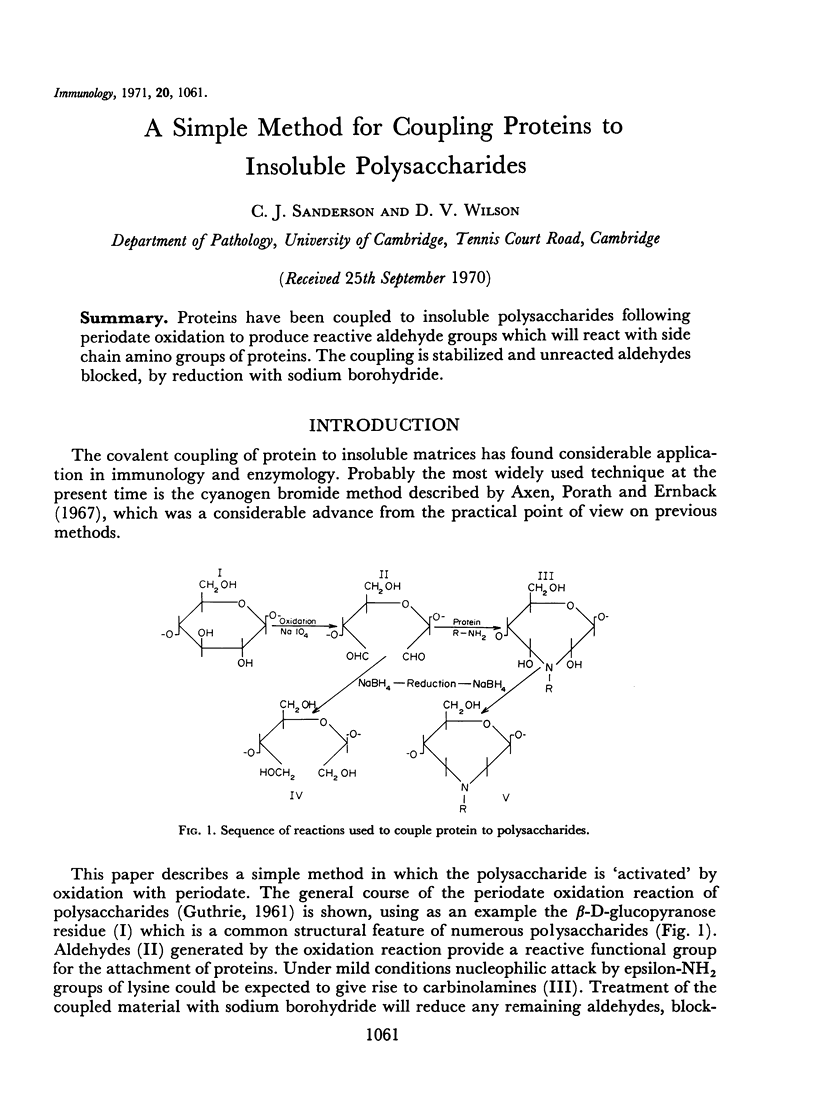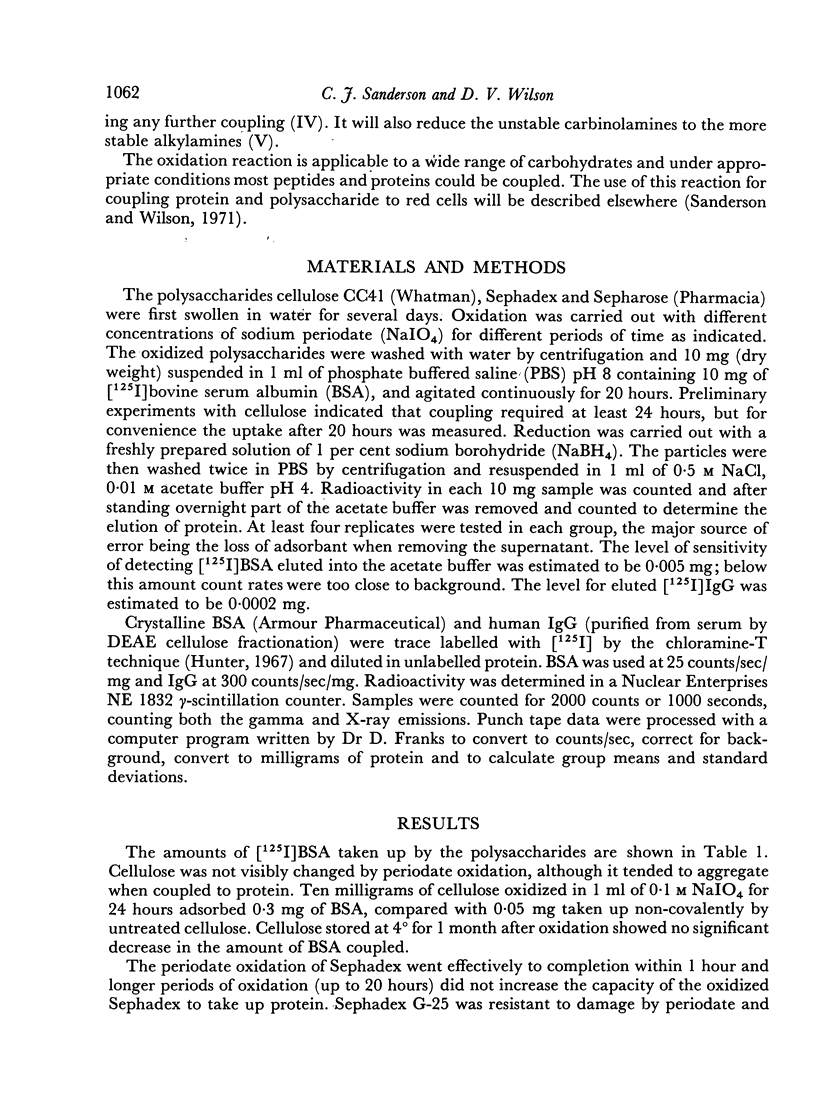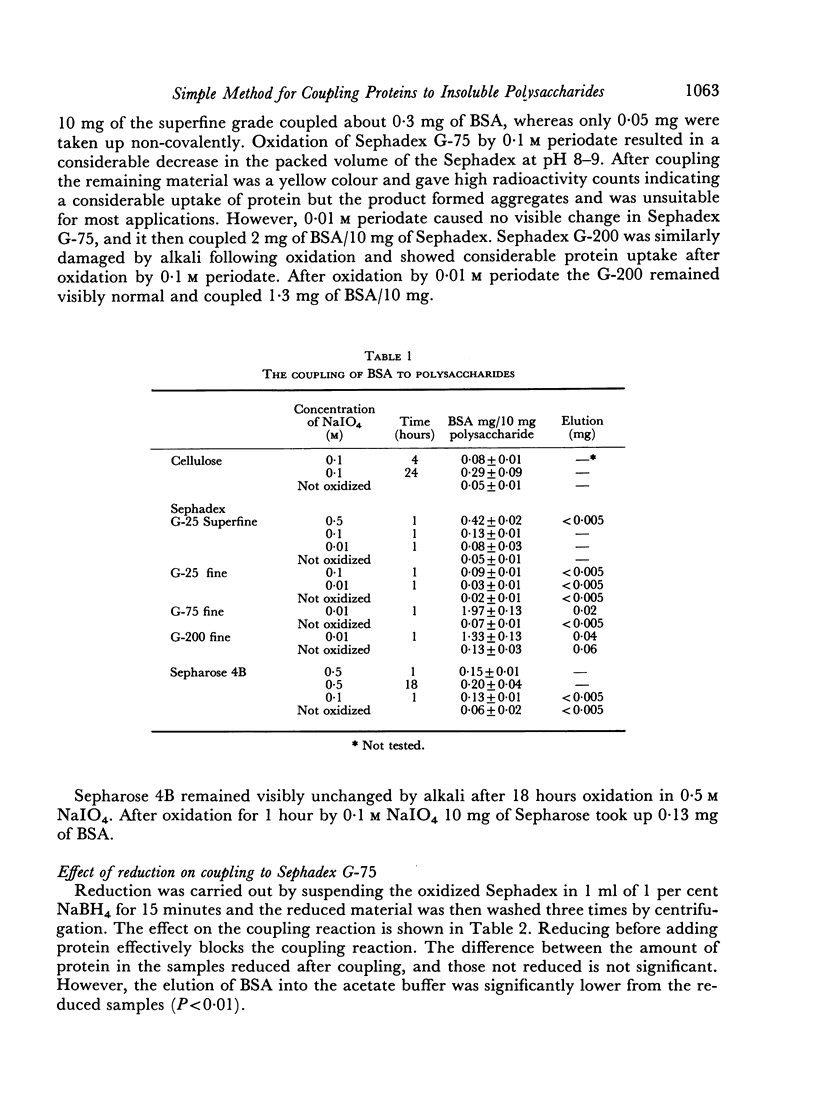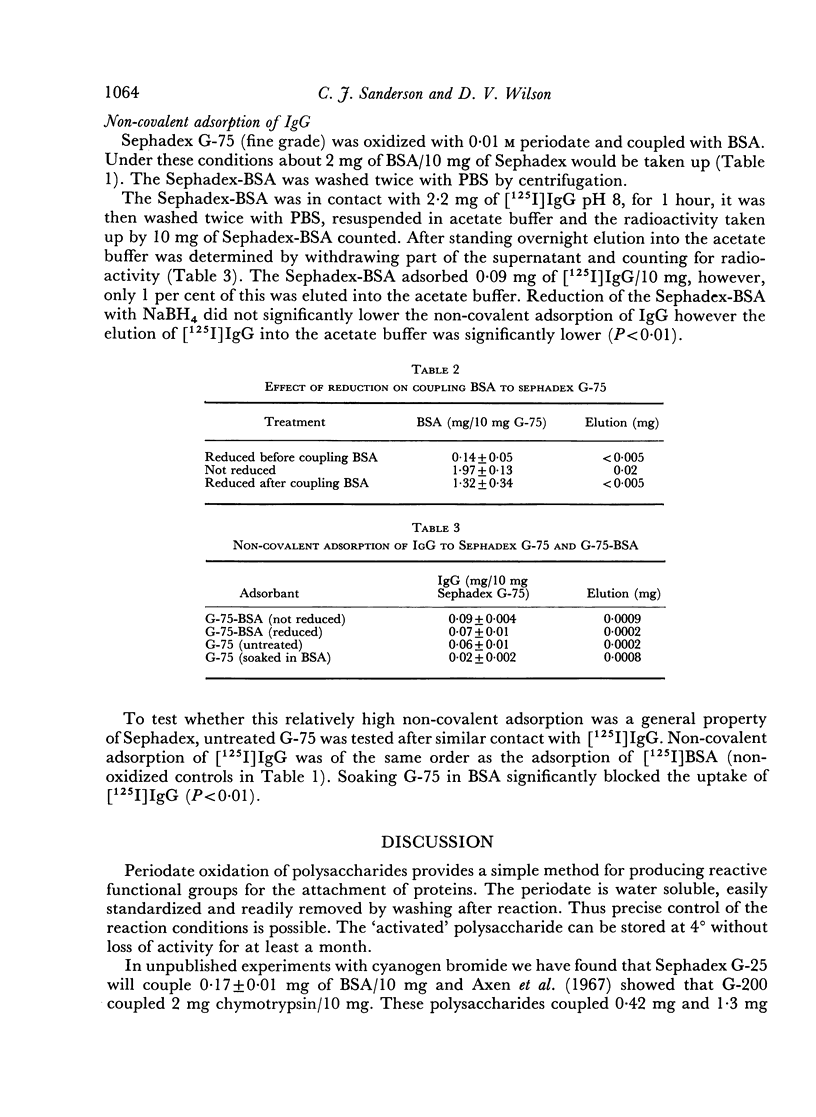Abstract
Proteins have been coupled to insoluble polysaccharides following periodate oxidation to produce reactive aldehyde groups which will react with side chain amino groups of proteins. The coupling is stabilized and unreacted aldehydes blocked, by reduction with sodium borohydride.
Full text
PDF




Selected References
These references are in PubMed. This may not be the complete list of references from this article.
- Axén R., Porath J., Ernback S. Chemical coupling of peptides and proteins to polysaccharides by means of cyanogen halides. Nature. 1967 Jun 24;214(5095):1302–1304. doi: 10.1038/2141302a0. [DOI] [PubMed] [Google Scholar]
- Cuatrecasas P. Interaction of insulin with the cell membrane: the primary action of insulin. Proc Natl Acad Sci U S A. 1969 Jun;63(2):450–457. doi: 10.1073/pnas.63.2.450. [DOI] [PMC free article] [PubMed] [Google Scholar]
- GUTHRIE R. D. The "dialdehydes" from the periodate oxidation of carbohydrates. Adv Carbohydr Chem. 1961;16:105–158. doi: 10.1016/s0096-5332(08)60261-1. [DOI] [PubMed] [Google Scholar]
- Omenn G. S., Ontjes D. A., Anfinsen C. B. Fracionation of antibodies against staphylococcal nuclease on 'sepharose' immunoadsorbents. Nature. 1970 Jan 10;225(5228):189–190. doi: 10.1038/225189a0. [DOI] [PubMed] [Google Scholar]


